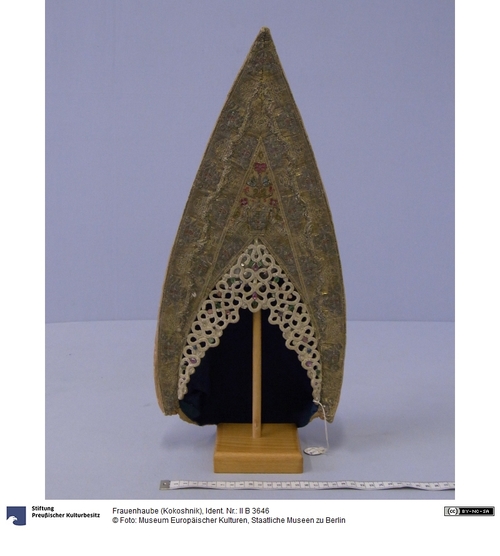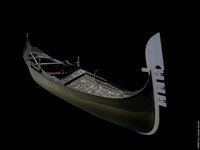Die sogenannte Kokoshnik gibt es in verschiedenen Ausführungen. Sie gehört zur Tracht der verheirateten Frauen in Nordrussland und ist regional unterschiedlich.
Die Vorderseite der Haube ist mit Pappe verstärkt und mit Brokatbändern belegt. Sie ist nach oben spitz zulaufend. Im unteren Bereich ist sie mit einem steifen, geflochtenen Wollband und verschiedenfarbigen Glassteinen verziert. Die Rückseite besteht aus großgemusterten, rosafarbenen Seidendamast, der innen mit blauem Leinengewebe gefüttert ist.
en

